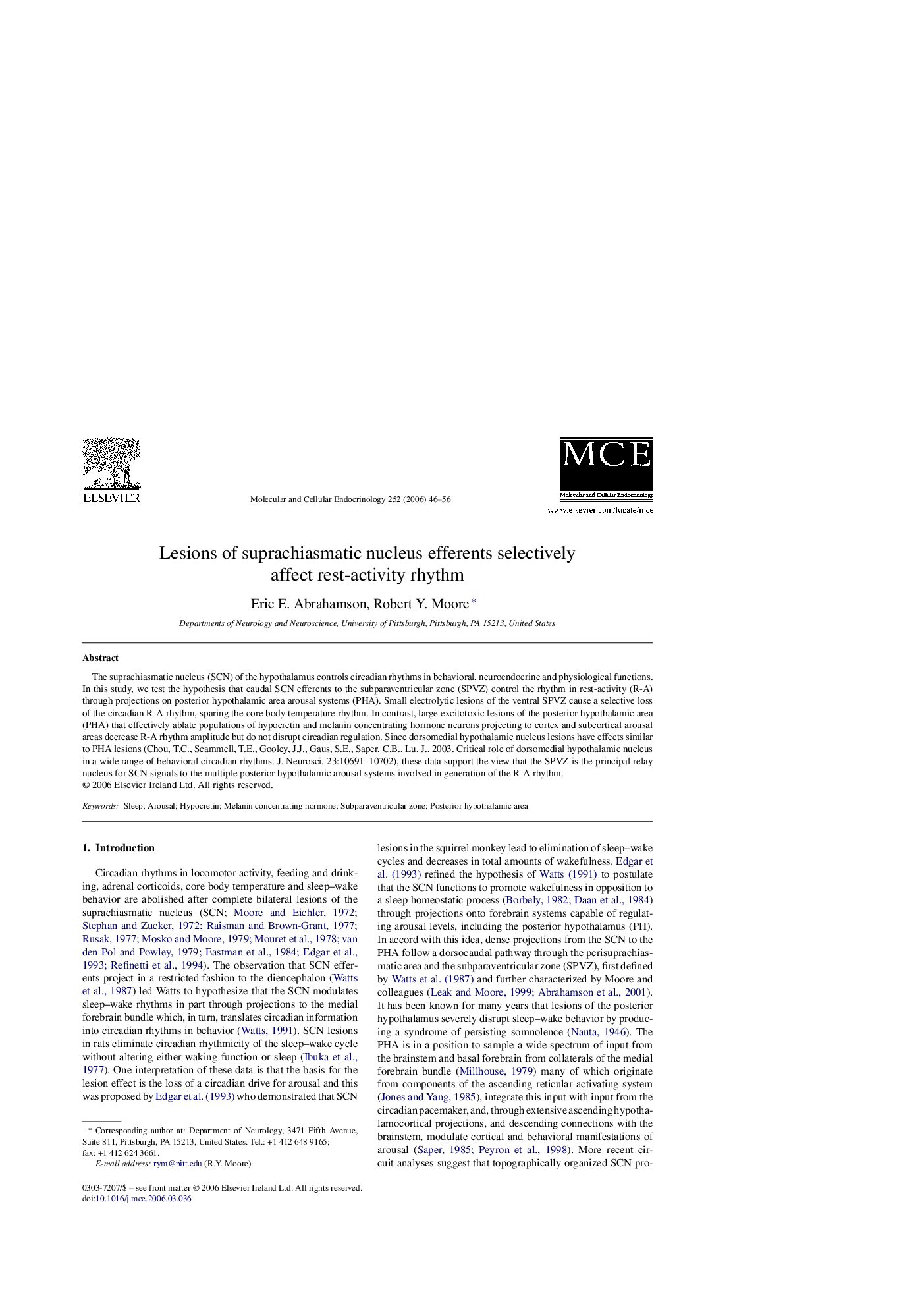| Article ID | Journal | Published Year | Pages | File Type |
|---|---|---|---|---|
| 2198203 | Molecular and Cellular Endocrinology | 2006 | 11 Pages |
The suprachiasmatic nucleus (SCN) of the hypothalamus controls circadian rhythms in behavioral, neuroendocrine and physiological functions. In this study, we test the hypothesis that caudal SCN efferents to the subparaventricular zone (SPVZ) control the rhythm in rest-activity (R-A) through projections on posterior hypothalamic area arousal systems (PHA). Small electrolytic lesions of the ventral SPVZ cause a selective loss of the circadian R-A rhythm, sparing the core body temperature rhythm. In contrast, large excitotoxic lesions of the posterior hypothalamic area (PHA) that effectively ablate populations of hypocretin and melanin concentrating hormone neurons projecting to cortex and subcortical arousal areas decrease R-A rhythm amplitude but do not disrupt circadian regulation. Since dorsomedial hypothalamic nucleus lesions have effects similar to PHA lesions (Chou, T.C., Scammell, T.E., Gooley, J.J., Gaus, S.E., Saper, C.B., Lu, J., 2003. Critical role of dorsomedial hypothalamic nucleus in a wide range of behavioral circadian rhythms. J. Neurosci. 23:10691–10702), these data support the view that the SPVZ is the principal relay nucleus for SCN signals to the multiple posterior hypothalamic arousal systems involved in generation of the R-A rhythm.
